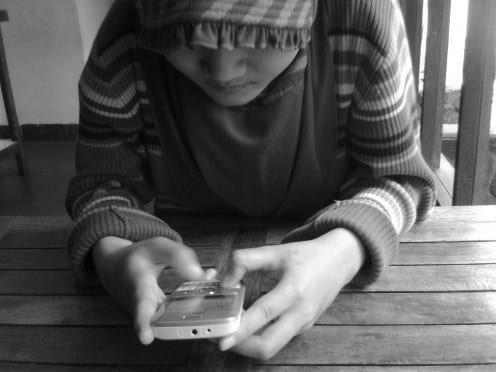Audience vs. Community in blogs and Facebook
By Jolynna Sinanan, on 5 August 2013
Having finished fieldwork for the time being has brought with it some time to reflect, read and think about what all this data will become once it grows up and leaves my head into the world. As part of this project, I have also had the chance to present some initial findings and have some discussion with other researchers at Tembusu College at the National University of Singapore. From this visit, I am now working on a short project on Singaporean lifestyle (or fashion, depending on how you characterise the genre) blogs, which has given me the opportunity to pre-theorise sociality and Facebook (often framed in terms around ‘community’, see Miller, 2011, Zhang, Jiang and Carroll, 2010) and sociality and blogs (often framed in terms of publics and audiences, see Myers, 2010, Dean, 2010, Papacharissi, 2007).
As a social space, Facebook has remained far less elusive than blogs. Through the site’s idioms, “friends”, “timeline”, “sharing” and “liking”, there are inclusive connotations, which markes the user (profile owner) as the centre of their social universe. Groups can be categorised as “good friends”, “acquaintances” and networks separated into sub-categories, to give order to the open-plan space where people from separate domains of one’s life congregate (Postill and Pink, 2012). Normative anxieties around Facebook are often about which people are going to see what activities and privacy settings can be adjusted down to the access of individuals to certain posts and photos.
In contrast, blogs are framed as very personally created entities, as diary entries, opinions, tips and trends floating around the World Wide Web aimlessly for anybody’s access (Papacharissi, 2007, Livingstone, 2008). Yet, some studies, and in particular those of teenage girls’ blogs, argue that being visibly public is more about creating safe and closed spaces akin to community and friendship than about a narcissistic desire to simply put oneself on display in front of others (Lövheim, 2011, Mazarella, 2005).
I might note that most of the studies on blogs quoted are based on textual analyses of blogs as data from the US. From my short research trip to Singapore, I argue that lifestyle blogs lie somewhere in between sociality as community and as (public) audience. Lifestyle blogs indeed have a different emphasis than Facebook, the authors are ‘micro-celebrities’ who entertain as much as they inform. The authors we have looked at are women, which also presents an interesting intersection of aesthetics, consumption and citizenship.
As I have suggested in previous posts, ‘political’ activity on Facebook falls into two categories: very political in the forms of activism and commentary and non-existent, where not even a “like” or a “share” is given to any post that could be read as political. Both visibility and invisibility of political activity on Facebook have implications for forms of citizenship in Trinidad. In the study of Singaporean blogs, we are seeing something very different, where again, ethnographic context is everything. Contemporary literature on Singapore describe a mix of values, for example, Singapore has a “unique combination of liberalised economic values, alongside elements of cultural traditionalism and authoritarian statehood” (Lewis, 2011: 22). Lifestyle has symbolic, spatial, economic, class and gender aspects and is also a form of expression of citizenship. As Professor Miller and I describe in the upcoming book Webcam, Trinidadians are self-conscious about their culture, especially in its presentation to the rest of the world. Similarly, in Singapore, the presentation of self is significant in a self-conscious culture (Clammer, 1994: 197*). The potential comparison of these ontologies across different platforms such as webcam, blogs and Facebook makes me wish I had another 8 years on this project.
*Clammer discusses shopping in Japan, from our research in Singapore, we suggest a similar conclusion applies
Bibliography:
Clammer, John, 1994 ‘Chapter 10: Aesthetics of the Self: Shopping and Social Being in Contemporary Urban Japan’, in Shields, Rob (ed.) Lifestyle Shopping: The Subject of Consumption, New York: Routledge
Dean, Jodi, 2010, Blog Theory, Cambridge: Polity
Lewis, Tania, 2011, ‘Making Over Culture? Lifestyle Television and Contemporary Pedagogies of Selfhood in Singapore, Communication, Politics & Culture, 44: 1, pp 21-33
Lövheim, Mia, 2011, ‘Young Women’s Blogs as Ethical Spaces’, Information, Communication & Society, 14: 3, pp 338-354
Mazarella, Sharon R. (ed.) 2005, Girl Wide Web, Girls, the Internet and the Negotiation of Identity, New York: Peter Lang
Miller, Daniel, 2011, Tales From Facebook, Cambridge: Polity
Miller, Daniel and Sinanan, Jolynna, Webcam, Cambridge: Polity
Myers, Greg, 2010, The Discourse of Blogs and Wikis, London and New York: Continuum International Publishing Group
Papacharissi, Zizzi, 2007 ‘Chapter 2: Audiences as Media Producers: Content Analysis of 260 Blogs’, in Tremayne, Mark (ed.) Blogging, Citizenship and the Future of Media, New York and Abdingdon: Taylor and Francis
Postill, John and Pink, Sarah, 2012, ‘Social Media Ethnography: The Digital Researcher in a Messy Web’, Media International Australia, 145, pp 86-93
Zhang, Shaoke, Jiang, Hao and Carroll John M, 2010, ‘Social Identity in Facebook Community Life’, International Journal of Virtual Communities and Social Networking, 2: 4
 Close
Close






